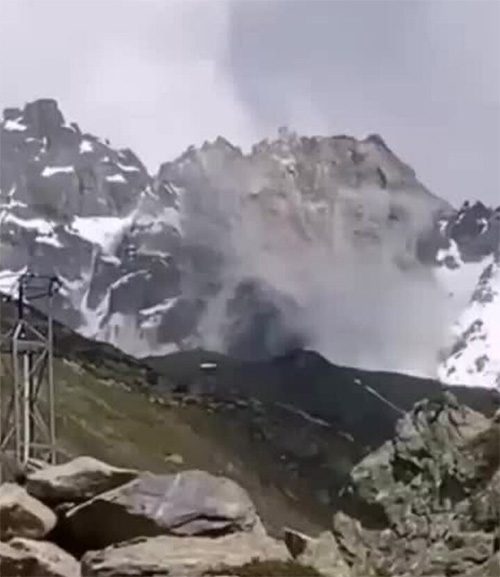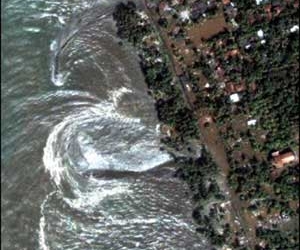A section of the Fluchthorn peak in the Silvretta Alps suddenly collapsed on June 11, causing over 100,000 cubic meters of rock to tumble into the valley below.
The landslide occurred after a prolonged period of high temperatures in Switzerland. This may be a result of melting permafrost. Scientists warn that similar events could occur as climate change causes ancient permafrost to degrade, Live Science reported on June 26.
Riccardo Mizio, a mountain rescuer, stated that the cross erected on the peak has vanished and no one was injured by the falling rocks. The main summit of Fluchthorn has lost about 100 meters. The collapse occurred on the western side, in the Futschol valley. The central peak, standing at 3,397 meters, is now the highest point of Fluchthorn, indicating that the mountain is approximately 19 meters shorter than it previously was.
Most peaks over 2,500 meters in the Alps are covered with permafrost, which seeps into the cracks between solid rock blocks, helping to bind them. Without this permafrost layer, the cliffs can become unstable, leading to landslides.
Climate change significantly impacts permafrost as rising temperatures cause ice in the cracks to melt. This is not unusual in the summer when the upper layer of permafrost melts temporarily, but more frequent heatwaves in the Alps are causing deeper layers of ice to gradually melt during the summer.
As the ground warms, melting permafrost is expected to further destabilize many rock masses in the Alps, leading to more frequent landslides. “The Fluchthorn peak has likely been frozen for thousands of years. As climate change gradually affects deeper rock layers, this collapse is likely a result of extreme temperatures from last summer or fall,” said Jan-Christoph Otto, a geologist at the University of Salzburg.

A section of Fluchthorn peak collapsed. (Photo: Christian Hutter).
In the Alps, atmospheric temperatures have risen significantly over the past few decades. According to the Swiss Federal Office of Meteorology, temperatures in the Alps are increasing by about 0.3 degrees Celsius each decade, which is approximately twice the global average. Based on long-term data collected by rock surface sensors, the average temperature inside the rock increases by 1 degree Celsius every 10 years.
While it is impossible to predict which peak or cliff in the Alps will collapse next, experts warn that similar rockslides will occur as the world warms. Otto stated that there are hundreds of mountains in the Alps with permafrost. “Given the ongoing temperature rise in the Alps, more similar events could occur,” he remarked.





















































